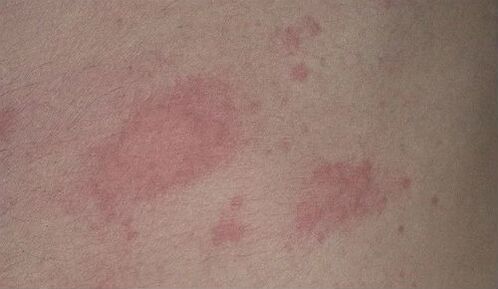
If you suspect that you have this disease, but do not know what psoriasis looks like and how to treat it, you should learn more about this disease and consult a dermatologist immediately.
What does psoriasis look like in the early stages: symptoms, photos
Skin rashes are characteristic of psoriasis at any stage. At the very beginning of development, such a disease manifests itself in various ways. In some cases it begins actively, develops rapidly, in others small and slow manifestations. In any case, in the absence of medical care, the disease progresses and occupies increasingly large areas of skin.
The initial stage of the disease in the form of small rashes (papules) can complicate the diagnosis. Over time, the rash grows, the horns merge into plates covered with scales. It is very important to diagnose psoriasis at an early stage so that treatment can begin immediately. The result of treatment will be remission for a long time, in some cases for 3-4 years.
Psoriasis is characterized by the following areas on our skin:
- small from behind
- knees and elbows
- inguinal folds
- head
- legs
There are several forms of the disease, each of which has different characteristics. Depending on where and how the papules appear, it will depend on which dermatologist diagnosed the psoriasis.
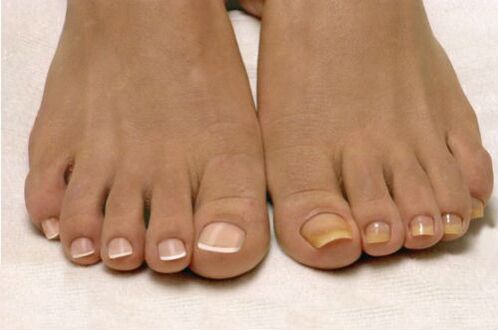
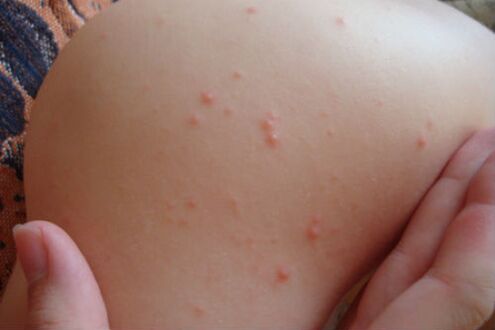
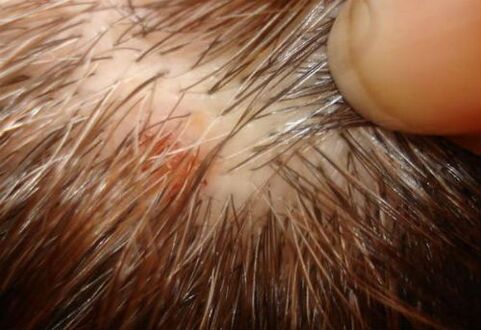
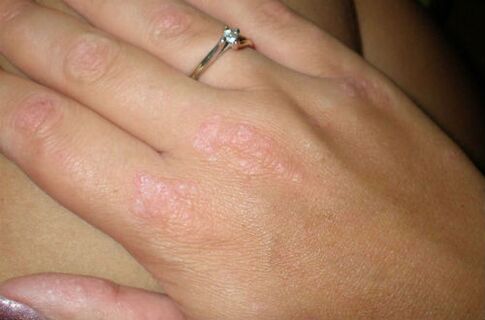
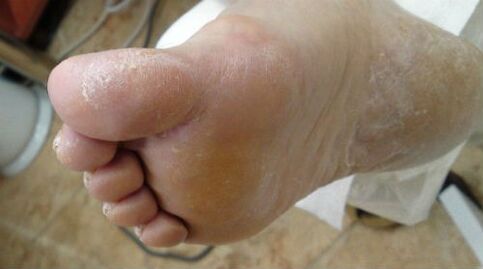
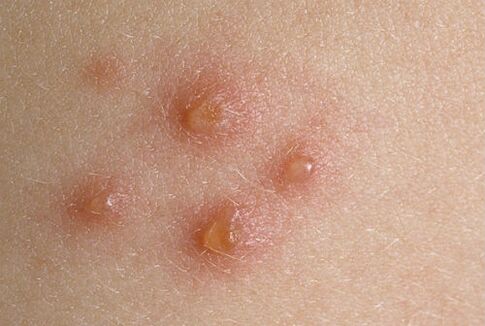
Skin rashes are not healthy anyway, but the following symptoms are most likely associated with psoriasis:
- The spots are red, slightly convex and covered with scales (dead cells).
- Plaques appear everywhere, more often on the knees and elbows. Sometimes they itch.
- Nails are worn and deformed.
- Painful blisters on the feet, palms, causing itching.
What are the forms of psoriasis?
The most common form is plaque psoriasis. It is also called ordinary or vulgar. In all cases, up to 90% of cases of this form are considered.
Psoriasis vulgaris is characterized by raised red plaques with gray or white scales. Infected skin becomes inflamed, easily damaged, and bleeds when the scales are peeled off. Because plaques grow on the skin over time, joining large areas. called "paraffin lakes".
Psoriasis of curved surfaces is called reverse, smooth, slightly protruding red spots that are unlikely to peel off. The localization of the spots is mainly in the skin folds: under the groin and armpits, external genitalia, under the abdomen and in the mammary glands (with obesity).
Spread to other areas of the skin is minimal, but the treatment of this form is complicated by natural friction and sweating during movement. Reverse psoriasis, if left untreated, can be accompanied by streptococcal pyoderma or fungal diseases.
Gutt psoriasis is less common and is a complication of streptococcal infections. It is characterized by small, drop-shaped lesions. Another distinguishing feature of psoriasis is the color of psoriatic plaques ranging from red to purple. The affected area is large, in most cases it is the hips, and can occur in other areas of the skin.
One of the most severe forms is pustular psoriasis. Its symptoms are blisters (pustules) with clear fluid. The skin under and around them is hot and inflamed. When blisters become infected, the clear fluid fills with pus, easily flakes off, but is difficult to treat. Location - lower legs and forearms.
Psoriatic onychodystrophy develops on the nails of the hands and feet. This shape leads to nail changes. They may change color, dots or horizontal lines appear. More severe forms are characterized by delamination or complete loss of the nail.
Psoriatic arthritis accounts for only 10% of cases. This form affects the joints and connective tissues. Mainly affects the fingers. In some cases, psoriasis can affect the thigh, knee and spine joints. This causes psoriatic spondylitis. With overt forms of psoriatic spondylitis, the patient is unable to move independently.
Erythrodermic psoriasis is characterized by extensive areas of inflammation, which can occur against the background of exacerbation of psoriasis vulgaris. With extensive inflammatory foci, this can be fatal because the natural thermoregulatory ability is lost.
Development of psoriasis
Psoriasis can affect different parts of the body with different symptoms. Let's look at different cases.
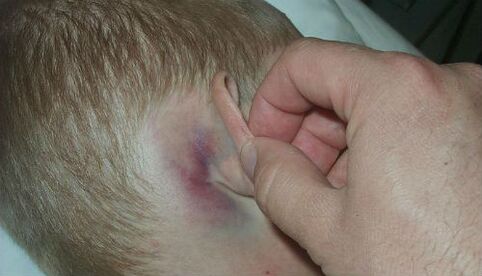
Appears on the scalp, behind the ears. Papules in these places may be itchy, cracked, wet.
In the body
The nature of the plaques on the body and their intensity depends on the form of psoriasis. Primary psoriasis manifests itself in different ways in the body: from single rashes to large areas.
In the hands
The plaques first appear on the elbows and forearms, then spread to the palms and fingers.
On foot
The first manifestations begin in the knees or legs, progressing to other areas.
On the elbows and knees
In these areas, psoriasis looks like a red, scaly rash, where the skin becomes rough.
On the palm
In these areas, plaques develop when they infect other areas. Left untreated, psoriatic arthritis can be dangerous.
On the face
It rarely happens in this area. Affects the area of nasolabial folds, eye area, cheeks. Sometimes it spreads to the mucous membranes of the tongue and cheeks.
On the nails
In appearance, it can be mixed with a mushroom, starting with dots, furrows and ending with a complete abrasion.
The onset of psoriasis in children
The pediatric version of the disease, especially in infants, is symptomatic and can often be confused with diaper rash or diaper dermatitis. Subsequently, peeling of the upper layers of the skin at the site of redness occurs, accompanied by severe itching. It is extremely important not to bring the disease to this stage, because it causes discomfort to babies.
It can also be expressed in a child with psoriasis, such cases are characterized by crusts, small scars remain when peeled. In any case, you should not treat your child alone because you know what psoriasis looks like to prevent complications.
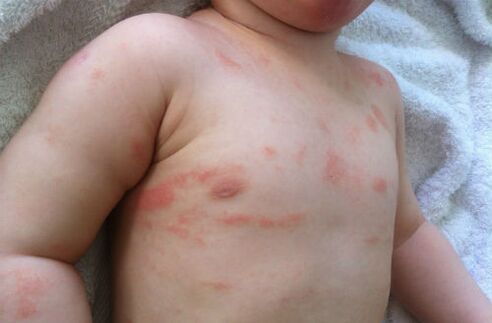
Causes of psoriasis
Psoriasis is not contagious, and scientists have identified several reasons for its occurrence. In addition, it has been proven that psoriasis occurs in childhood, ie up to the age of 10, due to genetics, ie. there were relatives in the family with a similar disease. The following cases are related to other reasons.
If we combine all the factors that provoke psoriasis, the following may be to blame for its manifestation:
- alcohol abuse
- genetic inheritance
- excessive hygiene
- Dry Skin
- stress
- take medicine
- staphylococcal and fungal infections
Early treatment
If you have been diagnosed with psoriasis, it is important to follow a diet and start treatment as soon as possible, as the onset of psoriasis is easier and faster to treat. Before psoriasis plaques begin to grow, a dermatologist will most likely recommend external treatment with the following ointments:
- Naphthalene ointment. It is prescribed in the early stages and in healing. Eliminates inflammation & soothes itching
- Sulfur-tar ointment. Eliminates inflammation suitable only for "dry" forms of psoriasis. The ointment should not be applied to the face.
- Salicylic ointment. Contains salicylic acid to soften scales & remove easily
medicines
In addition to ointments, treatment consists of physiotherapy procedures (electrosurgery, magnetotherapy, ultraviolet radiation, etc. ), drug treatment, vitamin complexes. The complex is designed for cases with progressive and severe forms.
Drugs are prescribed only after examination and, as a rule, cover a certain group of drugs:
- antihistamines,
- diuretics,
- immunomodulators,
- immunosuppressants,
- antidepressants,
- NSAIDs (group of non-steroidal anti-inflammatory drugs),
- enterosorbents,
- vitamin complexes.
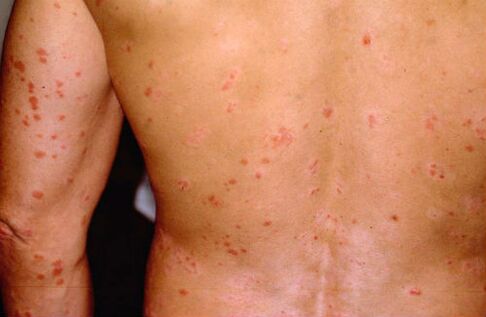
Folk remedies
Traditional treatments, especially in the early stages, can be combined with traditional treatment prescriptions. One of these recipes suggests the use of celandine juice. Stains should be rubbed with fresh juice throughout the summer, then by the end of spring the boards will be significantly reduced in size. If you perform the procedures for three consecutive summers, the spots should disappear forever.
The following recipe is suitable for early psoriasis - ointment from beaten eggs. Preparation is simple: 2 eggs, 1 tbsp. l. vegetable oil, beat well and add 0, 5 tbsp. l. acetic acid. This mixture can be stored, but in a closed bowl and in a dark place. Use as follows: Rub the affected areas of psoriasis at night, daily.
You can also prepare an oil-based ointment that helps a lot in the treatment of psoriasis. You need 300 g of butter, 2 chicken yolks and 100 g of linden honey. Use within two weeks. Leave on for 2 hours to rub painful spots 3 times a day, then rinse. After two weeks, another batch is prepared by adding 2 tbsp. l. celandine powder. This composition is designed for one hour.
In addition to ointments for psoriasis, you can take therapeutic baths with the addition of sea salt or walnuts, for example. Taking such a bath is useful not only in the initial stage, but also in the exacerbation of the disease. For a bath, you need to prepare about 400 g of leaves or bark. Pour boiling water over them, leave for 10 minutes and then strain. The filtered solution is intended for a therapeutic bath and should be taken within half an hour.
How to prevent psoriasis
It is known why psoriasis appears, but it is not clear why it takes certain forms. The disease can be caused by stress, immune system failures, past infections, or at the genetic level.
To protect yourself from relapse, you need to give up bad habits. Doctors also recommend moisturizing dry skin and avoiding burns, hypothermia and skin damage if possible. In addition, you should be careful when taking antibiotics, vaccines and beta-blockers, as they can cause exacerbations.
Avoiding infections, leading a healthy lifestyle, not working too hard, and avoiding stressful situations and worries - these measures will also help prevent psoriasis to some extent.
Psoriasis is a disease that needs treatment, but can be confused with a similar skin disease. Therefore, you should not diagnose yourself with a photo, and rather prescribe treatment without the necessary knowledge.























